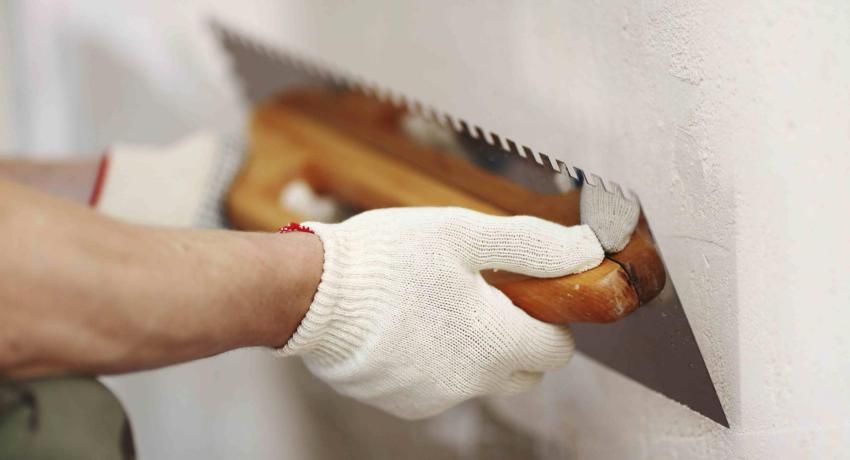Construction of any house begins with the foundation. It doesn’t matter whether it is industrial construction or a private house, the characteristics of the whole structure always depend on the reliability, strength and durability of the foundation. The types of foundations for a private house are very different, they differ in type of construction, material and other parameters. Below we consider not only common types of foundations, but also the subtleties of their construction.

Types of foundations for a private house, their features and device
The basic classification of foundations takes into account their design features. The most popular are the following types: belt, columnar, pile and slab. Various combinations are also possible.
If you look at the photo of the strip foundation, it becomes clear where it got its name from. This type of construction is ribbons dug into the ground, which assume the main load from the bearing elements of the main structure. Tapes, in turn, are based on base plates. Thus, a significant part of the load from the walls is distributed over a large area.

During the construction of the strip foundation there is no need to carry out preparatory work for the soil, so it is good if you need to build a building quickly. On the other hand, it is not designed for a large load, so the best option for the use of strip footing is one or two-story houses.
The depth of laying of the strip foundation is largely dependent on the materials from which it is made, as well as the type of performance selected during construction. There are two main types of tape designs:
- The prefabricated foundation is made of reinforced concrete blocks. Assembly requires specialized equipment, the blocks themselves are produced at the factory.
- Monolithic – made immediately on the construction site (without an intermediate link in the form of a plant).
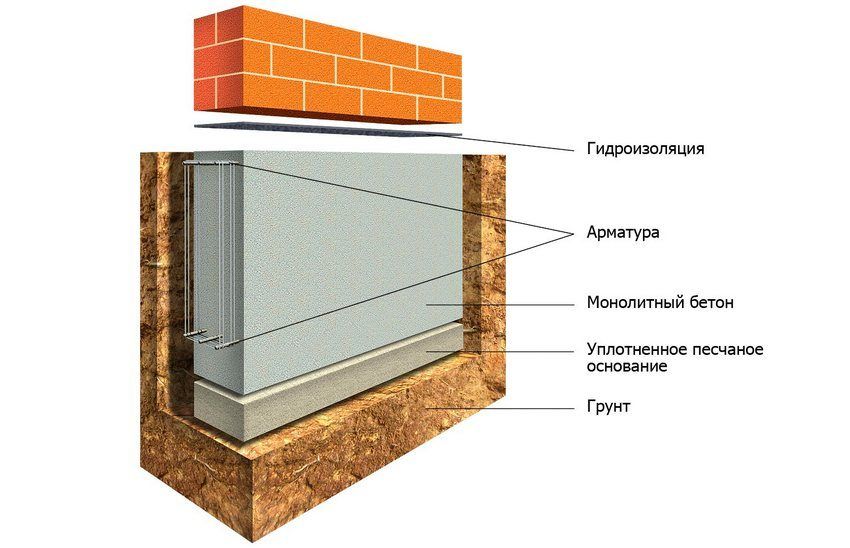
Pros and cons of strip foundations made of various materials:
- reinforced concrete foundation – has exactly two advantages: the relatively low cost of the material and the ability to withstand heavy loads. If you need to build a building with heavy load-bearing walls, the foundation of reinforced concrete is your choice. The disadvantage of this option is a long time of construction work;
- rubble concrete is another popular and relatively inexpensive type of strip footings. Consists of concrete, which is additionally filled with boulders, gravel or brick battle. Also able to withstand heavy loads;

- brick foundation – used for the construction of buildings up to five floors and in cases where it is impossible to use a monolithic foundation. As the name implies, consists of clay bricks.
Helpful advice! If you need to do a strip footing calculations, a calculator for this can be found on the Internet. With it, you will calculate the consumption of material, determine the depth of construction and other important parameters.
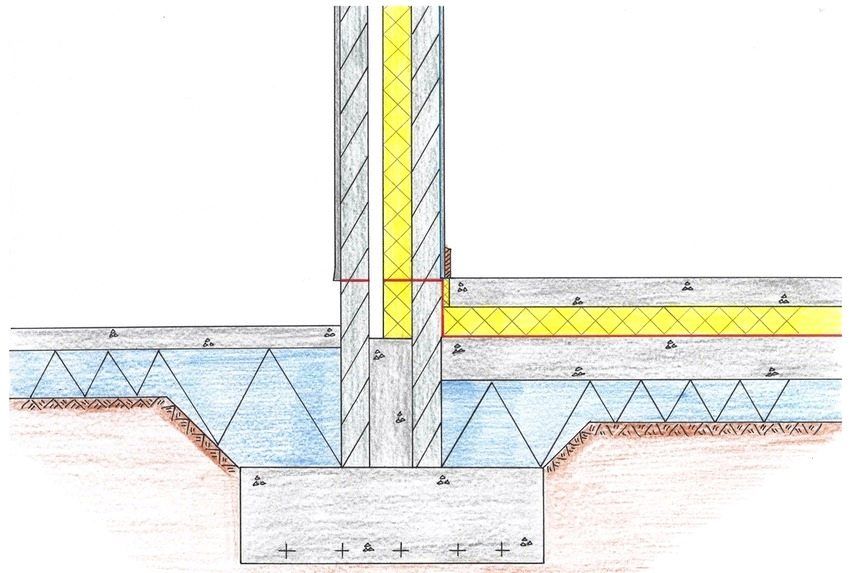
In general, as the positive properties of the strip foundation, you can highlight its simplicity in installation and the possibility of using it as walls for a basement. Also, this type of foundation is characterized by high bearing capacity. Cons tape construction – for its construction you will need specialized equipment, such as a crane, dump truck and concrete mixer.
Pillar foundation is a pillar immersed in a specially drilled well or directly in the ground. The pillars on the top are joined by reinforced concrete beams and are designed for homes with a relatively low weight. Such a foundation would be an excellent option for a medium-sized wooden house or other lightweight construction. He is good for country houses or frame buildings.
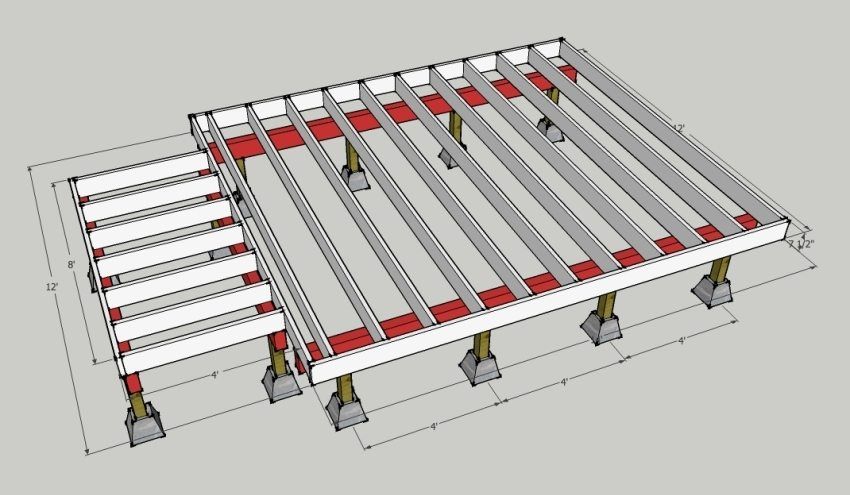
Columnar foundations for a private house are used on stable soils, which are not characterized by deformation due to temperature changes. As well as strip, columnar foundations can be prefabricated or monolithic. In addition, they can be made from the following materials:
- brick – used to support buildings and structures with brick walls up to two floors high;
- stone – for heavy buildings;
- wood – the best option for wooden structures, such as baths or country houses;
- reinforced concrete is the heaviest version of the column foundation used in industrial buildings or buildings with a large weight, which have more than two floors.
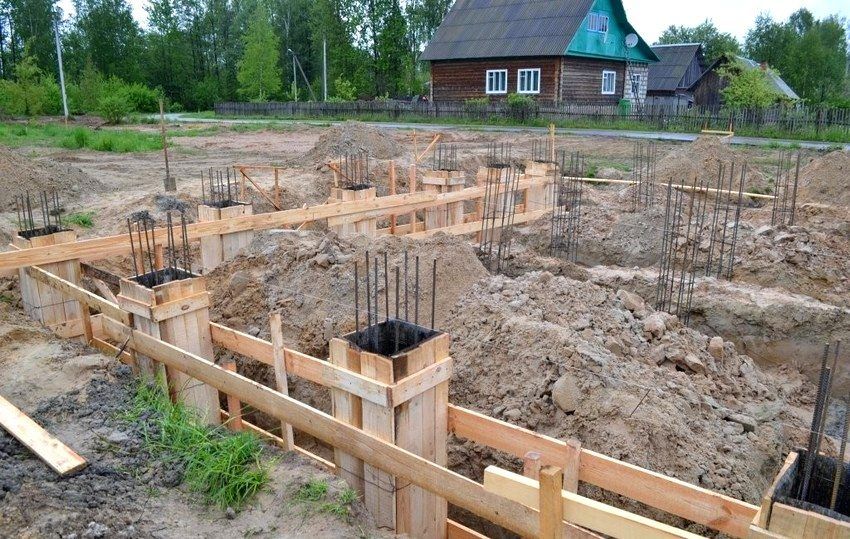
Calculations of the columnar foundation are carried out on the basis of the dimensions of the structure and other parameters.
The advantages of the columnar foundation can be attributed to its relatively low cost, but there are more negative sides. This and low strength, and possible problems with the construction of the basement or basement. Therefore, this type of construction is best used for small household buildings, baths, sheds and other structures that do not provide a basement and have not too much weight.

This type of foundation is a reinforced concrete slab that fits to a certain depth. Its thickness can vary from 30 to 100 cm, and reinforcement is used to increase the strength characteristics. As preparation, a layer of concrete is poured under the slab or sand is poured.
The pros and cons of the slab foundation can be painted in several phrases. It is good because the load is evenly distributed over the entire area of the plate, so the slab foundation is well tolerated by both vertical and horizontal deformations. Most often it is used on weak types of soil, for example, quicksand, sand, etc. The disadvantage of such a foundation is that it is performed only in a monolithic form.
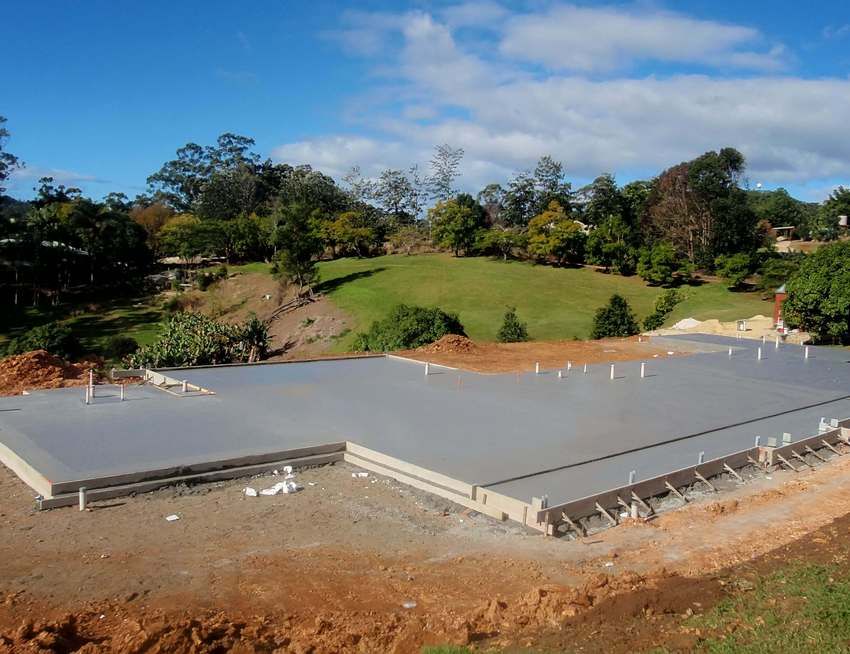
Helpful advice! If necessary, the construction of a large area of tiled basement are used so-called expansion joints. This means that one large slab is cut into several smaller pieces. This technique allows you to avoid the occurrence of cracks and reduce the bearing capacity of the foundation.
Another disadvantage of the slab foundation is the high cost of installation and the materials themselves. But, if you want your house to stay as long as possible without deformations, even on the most unstable ground, this option would be ideal.

This type of foundation for a private house, like a pile, is one or a series of piles, which are combined on top of a special slab. The slab can be made of concrete or additionally reinforced with iron reinforcement. This option is often used when it is necessary to build a structure on very weak soil, under which there is a stronger one.
Structures on stilts are built on sand, quicksand, loose soils. This type of construction allows you to transfer a significant load on weak soil, and also helps the foundation to withstand the weight of a large building.

Pile foundations for a private house can be made of various materials:
- wooden piles – used for small wooden buildings. They are made mainly from pine treated using a special technology;
- reinforced concrete is a good basement option for buildings and structures with reinforced concrete walls that have a lot of weight;
- metal – is used when for some reason it is impossible to use structures made of reinforced concrete;
- combined piles of metal and concrete – are used in extreme conditions or on very difficult soils, for example, on swampy soils.

In addition, piles differ in the type of manufacturing:
- pressed into – sink into the ground with the help of special hydraulic pumps;
- ramming – first a well is drilled, and then concrete is fed into it, which allows to get a pile. In this case, different grades of concrete can be used for the foundation of a private house;
- driven – hammered into the ground with the help of specialized hydraulic hammers. This type of construction can be used only when there are no other buildings nearby, as the shock wave when driving a pile can damage the adjacent structure;

- screw piles – the price of the pile-screw foundation is higher than the previous options, but it can be used on any soil, regardless of its density and other characteristics. This type of pile is screwed into the soil like a screw. Despite the fact that there are also disadvantages, the advantages of pile-screw foundations allow them to be widely used for the construction of bridges, towers, power lines and other specialized structures.
Helpful advice! Piles of printed or impressed type are best used when there are old or dilapidated buildings nearby, which will keep them intact.
The minus of any pile foundation is the high cost of its construction. For installation and transportation of piles requires the involvement of specialized equipment, which significantly increases the cost of construction work. And the undoubted advantage is that it is possible to build such a foundation in a limited area and with a small amount of earthworks.
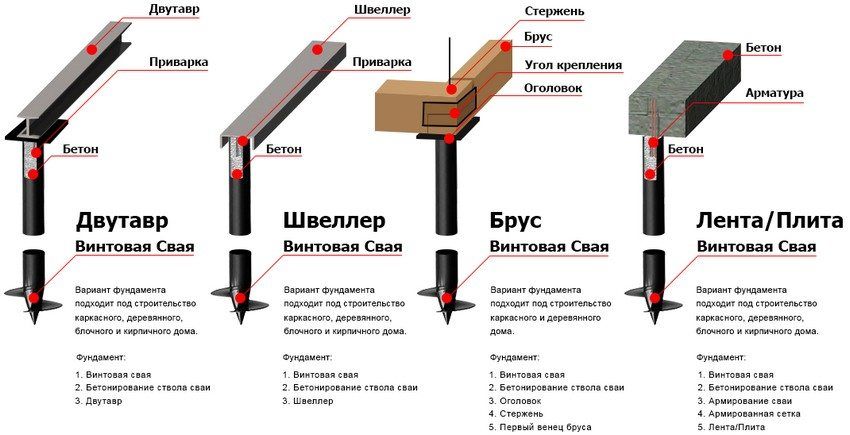
There are a number of general recommendations that can be applied to devices of any type of foundation. Common factors include the following:
- Availability under future groundwater design.
- The general condition of the soil on the site.
- The magnitude of the load from the supporting structure.
- The depth at which the soil freezes to the maximum.
- The presence or absence of the basement.
- Estimated lifetime of the structure.
- What materials are used in construction.
- Is there any underground communications on the site?
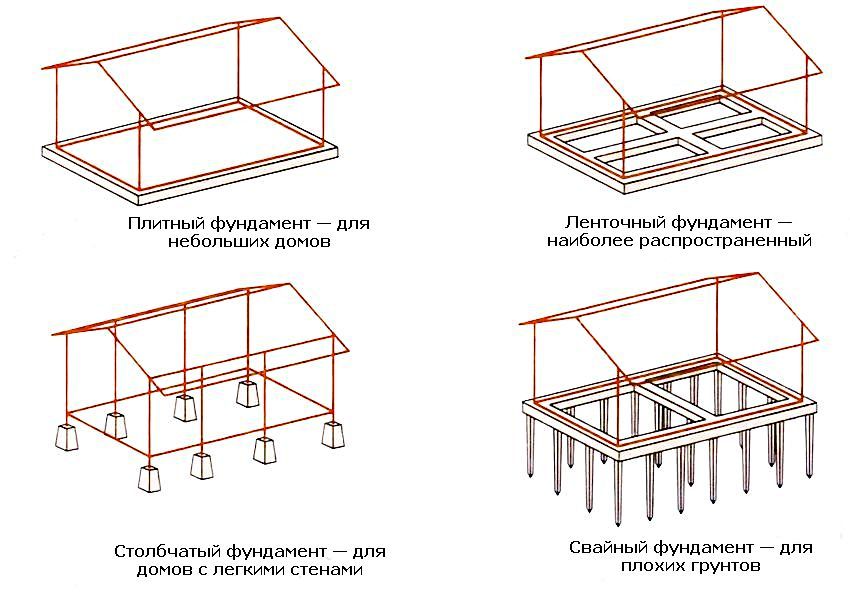
All these moments are extremely important when choosing the optimal variant of the type of foundation for a private house, so they should be given special attention. Below we consider each of the factors in more detail.
Remember that the foundation is the most important part of any building. If you decide to save on its design or construction, it may adversely affect the house in the near future. Because you should not spare money or time – then your house will last as long as possible, regardless of environmental conditions.
